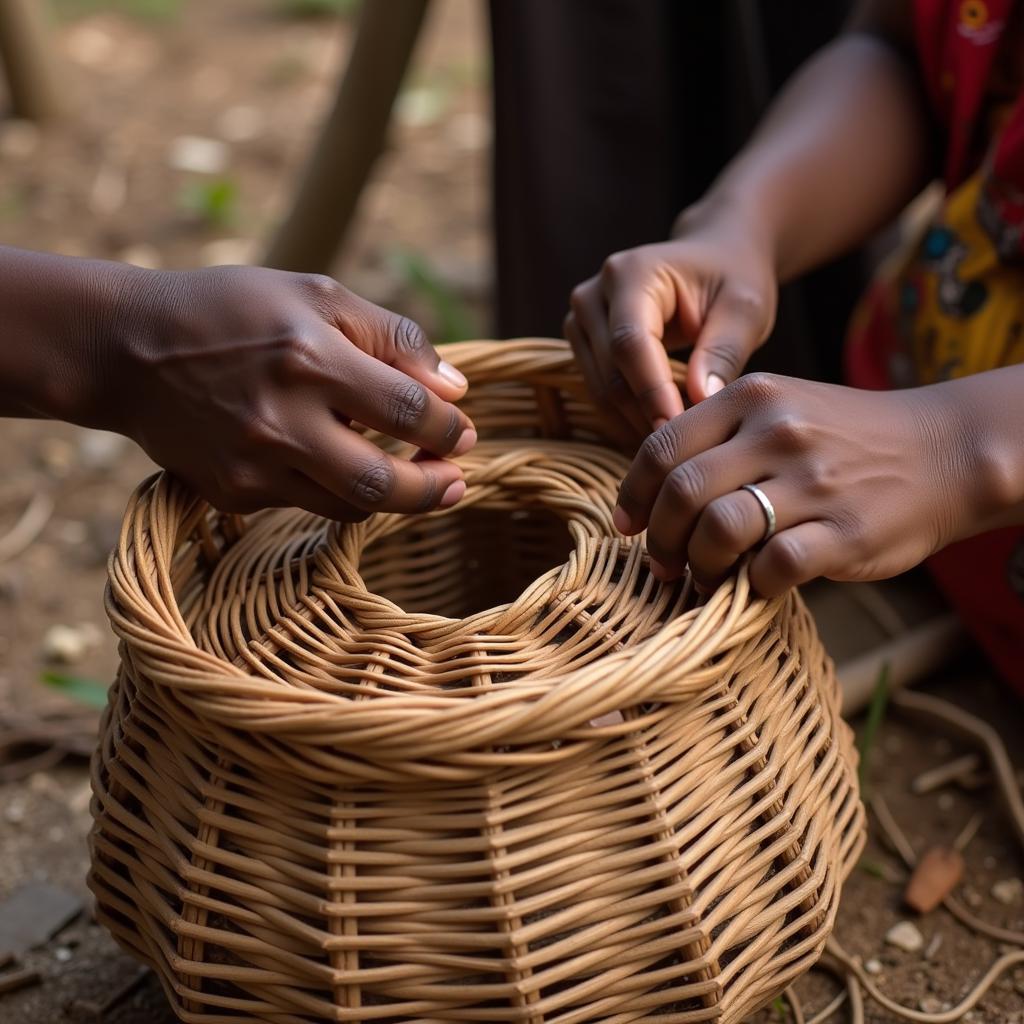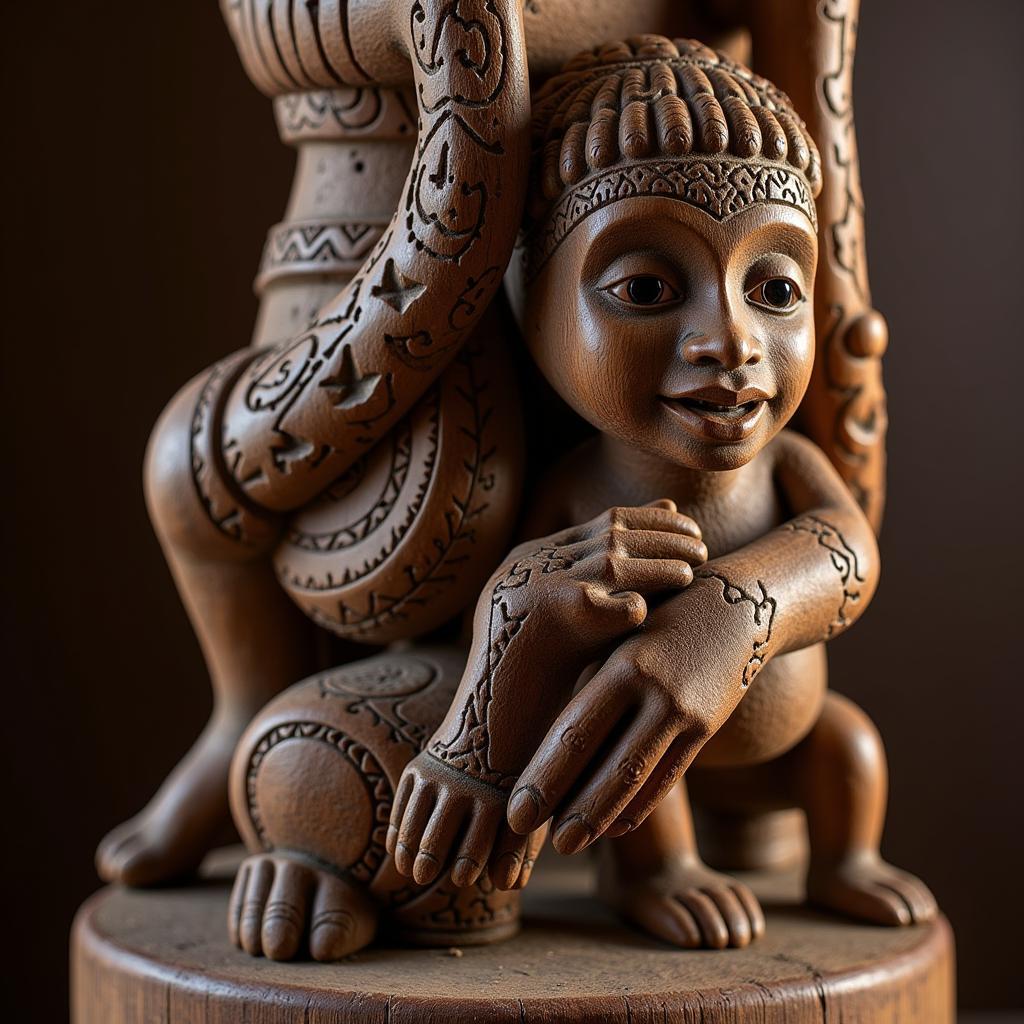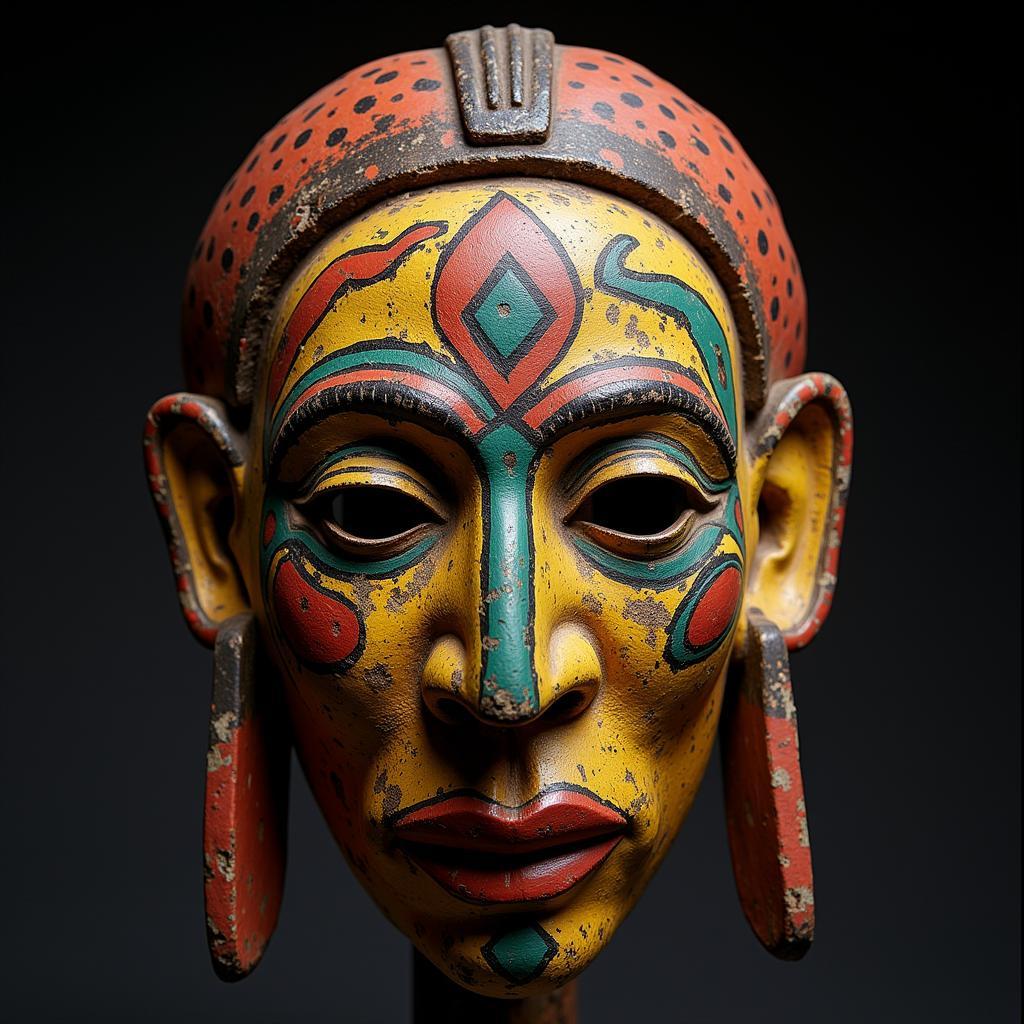African Craftsmanship: A Rich Tapestry of Heritage and Skill
From the intricate beadwork of the Maasai to the boldly patterned textiles of the Ashanti, African Craftsmanship stands as a testament to the continent’s diverse cultures and artistic ingenuity. For centuries, skilled artisans across Africa have honed their craft, transforming natural materials into objects of beauty, function, and profound cultural significance. This rich heritage continues to thrive, captivating the world with its unique blend of tradition and innovation.
 Traditional African Basket Weaving
Traditional African Basket Weaving
The Essence of African Craftsmanship
African craftsmanship is more than just the creation of physical objects; it’s an embodiment of cultural identity, storytelling, and ancestral knowledge. Each piece carries within it the echoes of generations past, reflecting the beliefs, values, and aesthetics of its origin.
Materials and Techniques Rooted in Nature
African artisans have a deep connection with their environment, drawing inspiration and resources from the natural world. From the rich hues of natural dyes to the durable fibers used in weaving, the materials themselves tell a story of sustainability and resourcefulness. Techniques passed down through generations, often within families or communities, ensure the preservation of these ancient skills.
 Intricate Design in African Wood Carving
Intricate Design in African Wood Carving
Diverse Forms of Artistic Expression
The vastness of the African continent is reflected in the sheer diversity of its craftsmanship. Each region boasts unique traditions and specialties:
- Textiles: From the intricate kente cloth of Ghana, woven on narrow looms and renowned for its vibrant colors and symbolic patterns, to the mudcloth of Mali, featuring geometric designs created using fermented mud, African textiles are as varied as the cultures they represent.
- Beadwork: The Maasai people are renowned for their elaborate beadwork, used to create stunning jewelry, clothing adornments, and ceremonial objects. Each color combination and pattern holds specific cultural significance.
- Woodcarving: West Africa, in particular, boasts a rich tradition of woodcarving. Masks, sculptures, and everyday objects showcase the artistry of skilled carvers, who transform wood into powerful representations of spirits, ancestors, and everyday life.
- Pottery: Utilitarian yet beautiful, pottery traditions flourish across Africa. From the intricately decorated pots of Morocco to the watertight vessels of the Himba people of Namibia, each piece serves a specific purpose while reflecting the aesthetic sensibilities of its maker.
 African Mask Used in Ceremony with Vibrant Colors
African Mask Used in Ceremony with Vibrant Colors
African Craftsmanship in the Modern World
Far from being relegated to the past, African craftsmanship is experiencing a resurgence in popularity. Contemporary designers and artists are drawing inspiration from these traditional forms, fusing ancient techniques with modern aesthetics to create unique and highly sought-after pieces.
A Global Stage for African Talent
Platforms showcasing and celebrating African craftsmanship are emerging, giving artisans access to new markets and audiences worldwide. This exposure not only helps to sustain these traditions but also elevates African artistry onto a global stage.
Supporting Ethical Consumption and Sustainability
Choosing authentic African crafts supports fair trade practices and empowers local communities. By investing in these unique pieces, you are contributing to the preservation of cultural heritage and the livelihoods of talented artisans.
Embracing the Legacy of African Craftsmanship
African craftsmanship offers a window into the heart and soul of a continent. It’s a testament to human creativity, resilience, and the enduring power of tradition. By appreciating and supporting these art forms, we play a role in ensuring that the rich legacy of African craftsmanship continues to inspire and captivate generations to come.


